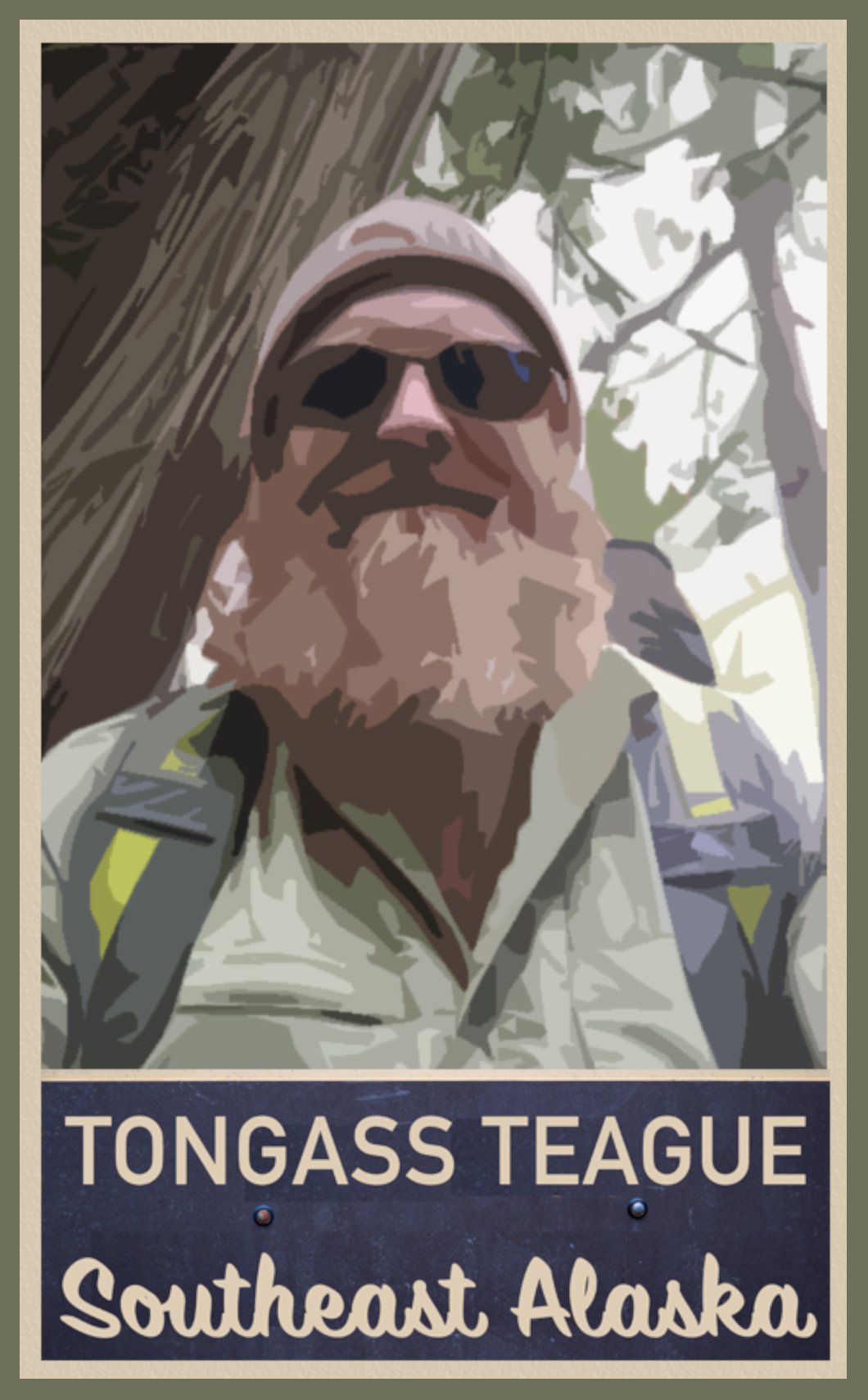More About Ketchikan's Weather
Mostly we get rain, up to 160 inches a year, from an indistinguishable solid mass of clouds that shed a range of precipitation: threatening rain, having just rained, on-and-off drizzles, soaking mists, steady rain, sheets of rain, and sideways sheets of rain (with strong winds). It can often be raining in town and sunny out north or vice versa, and rainbows can appear in the transitional zones. On the rare occasion, we’ll get a thunder storm, but we’re talking maybe only once or twice a year, and often never in a year or two. However, experiencing many different types of weather within one day is possible at any time in Alaska, especially when you are hiking into the alpine. You may start off with sun and high 60s or low 70s at the trail head near sea-level, may hike into rain halfway up the mountain, and then run into snow near the top of mountain. If you can’t see the top of the mountain because clouds obscure the peak, that most likely means that it is raining or snowing up there. Sometimes the opposite can be true as well. You can start off in cold rain at the trailhead and then pop out above the clouds into the sun. Occasionally we’ll get sleet and hail too. And the lake and river temperatures are usually quite cold because they are often fed by snowmelt from the upper reaches of the mountains. The Pacific Ocean here is also very cold too. According to the United States Geological Survey of the Ketchikan area, in the summer the water temperatures can range between 50 and just over 60 degrees Fahrenheit and in the winter can get down as cold as 32 degrees Fahrenheit.
The summer air temperatures can range from 50s to the 70s, with occasional dips into the 40s and spikes into the 80s. The fall and spring are generally stuck in the 40s, and the winter usually hovers around the 30s to low 40s, with high-pressure dips into the 20s and sometimes teens. I have seen the temperature drop into the single digits as well. If and when we get snow in the winter, it usually happens as a colder arctic high pushes out the usual rainy low and the rain changes to snow and drops heavy and wet anywhere from a couple inches to a couple feet. Then we’ll have sun for a few days or couple weeks and temperatures below freezing, preserving the snow. When the low-pressure system moves back in the from the south, we’ll usually get more snow as the arctic high leaves, but then as the temperature gradually warms up, the snow turns to rain, washing the snow away once again.
The wind is another thing to be aware of. In the alpine area above tree-line, you are more exposed to the elements because there is less shelter and the mountains can create their own weather. In the early afternoon, the land heats up during a sunny summer day, and the colder ocean air will be drawn toward the land as the hotter air rises. Because of the mountains here, the higher elevations will also usually be colder and often snow, and this colder air will sink as the sea-level land’s warmer air begins to rise. These inversion winds can range from a light refreshing breeze to some erratic stiff winds. Besides these local winds, the larger weather patterns can change quickly here because we are perched right on the eastern end of the Pacific Ocean, where nothing slows the jet-stream down as low-pressure systems gain momentum, moving from west to east across the open expanse of the Pacific. Ketchikan is known for forty- to sixty-mile-an-hour winds, and on occasion up to 100 miles-an-hour in a rare, extreme storm, usually in the fall. These winds are sometimes referred to as Taku winds, where a cold high-pressure system moves down into Southeast Alaska from the arctic, pushing out the regular rain from the warmer Japanese Current. I’ve woken up to the sound of my neighbor’s propane grill being hurled off his deck to crash into my driveway. Often, when the wind is up, the rain sounds like a water hose spraying directly onto my window. And trees blow down across roads and knock the power out. Though summer is usually quieter in general, the winds can kick up. One day in 2016, the wind was up and for the first time a cruise ship came into the city docks too hot and took out berth 3. So, be forewarned: the weather is no joke.
CLICK HERE TO RETURN BACK TO INTRODUCTION TO HIKING KETCHIKAN

